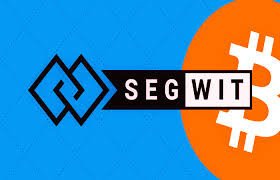Bitcoin code change should not be seen as focusing on network scaling, or as opening a new layer for potentially faster and cheaper technology.
The new version, which eventually comes into force after months of debate, encourages developers to create a more structured "themed" version of the software. This software seems to be an unusual development for the team behind the world's oldest and most valuable crypto money network.
When Bitcoin Core went to update in the crypto money code, amateur spirit volunteer developers spent most of their time collecting independent optimizations. But this new code release, the sixteenth "major release" since Bitcoin's initials, is slightly different from 0.16.0.
The updates that will be available in the coming days include a version focused on making it easy to send SegWit-style transactions from most software's default wallet. While SegWit's first software presentation is meant to make the network understand the new rules, 0.16.0 is more noticeable as it makes it possible for users to take advantage of their own advantages.
Bitcoin Core supporter Andrew Chow said on CoinDesk:
The primary change is to add SegWit into your wallet. This will allow users to easily create SegWit addresses.
New version of fertility
Chow explained that the new version features have been added to both the command line cluster and the wallet user interface for this purpose. Thus, both programmers and non-programmers will be able to use this easily. Chaincode Lab engineers and Bitcoin Core supporter Marco Falke noted that while it is possible to create SegWit addresses in earlier wallet versions, the process is "pretty dirty" and "mostly hidden." However, now with the new software version SegWit addresses will be defaulted. This means that the new addresses will automatically be compatible with the scalability feature.
Version 0.16.0 is also the first version to support "independent SegWit addresses", also known as bech32 addresses, a new address format pioneered by Pieter Wuille and Greg Maxwell, Bitcoin Core supporters that support SegWit more user-friendly and automatically than legacy address types.
According to Falke,
"This is the most exciting part of publishing"
wallet users are expected to receive a lower charge in the near future when their version addresses are automatically created. And the new version can offer wider advantages. Bitcoin Core first drove SegWit to the market in November 2016. The subsequent war has led some software users to support competing cryptographic coins that do not work together altogether (for example, crypto money like Bitcoin Cash argues that it is the key to low wages).
According to Chow, another advantage of the native SegWit address format is that fees are slightly lower. However, since the format is so new, most wallets assume that it does not support it at this time. Chow added that the other parts released offer more flexibility to the users Bitcoin Core wallet. For example, users can store their wallets or private keys in another data directory. More technical minds can look at release notes for more details.
SegWit comes in long-term
updating a global software program's code may not be a quick process. Because the users complain that some parent companies adopt this situation. Given this user expectancy and impatience, many may be surprised that Bitcoin Core takes too long to add support for the transaction type in the wallet. But developers say the delay is for a few reasons.
Chow said he wants to see how SegWit works on the network before it can support it, primarily if there are security holes or other concerns. Secondly, it was concerned that the politics being watched were quite distracting.

Very useful article, thank you. I am interested in crypto topic too, so you may check my content, so that we will exchange some experience
Hey thanks for your great post dear
I want to share something special may be that help you
TOP 3 CRYPTO ANALYST WITH SUCCESS RATE
@salahuddin2004 with success rate 100
@lorfdfruth with success rate 95
@cryptogen with success rate 92